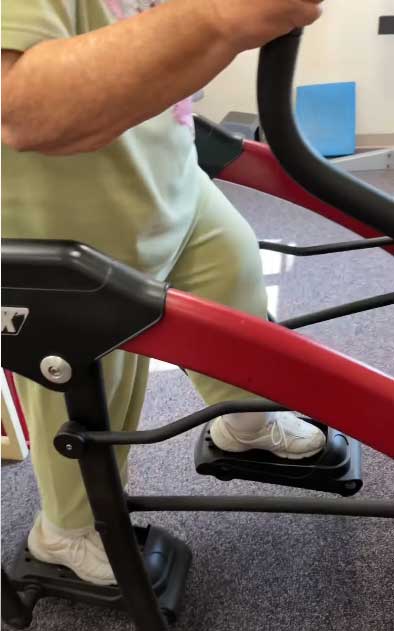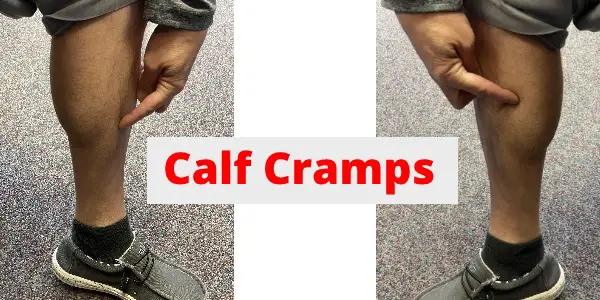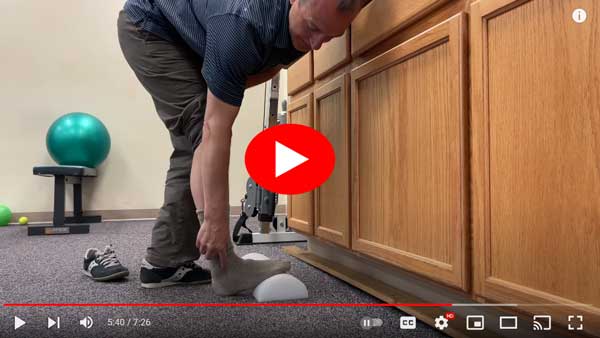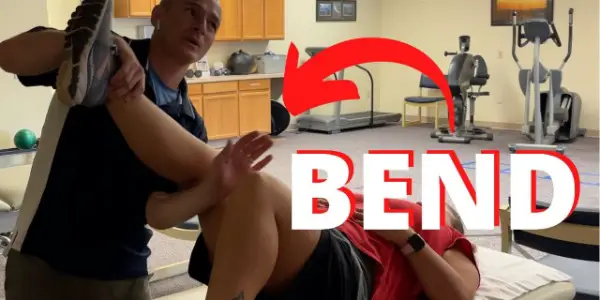Using an Elliptical Trainer After Total Knee Replacement Surgery
An elliptical trainer may be the best of all worlds when choosing an exercise machine after a total knee replacement surgery.
The elliptical trainer allows you to perform weight bearing exercise without the impact of walking or jogging on your new knee joint.
You also receive the benefits of a vertical component with each step or revolution.
Video: Benefits of the Elliptical Trainer Post Knee Replacement
Video Summary:
Tony Maritato, PT emphasizes the elliptical trainer as a highly effective equipment choice after undergoing a total knee replacement. Unlike treadmills and bikes, the elliptical offers weight-bearing exercises, promoting a more functional return to walking. It’s designed to reduce impact forces on joints, encourage symmetrical stride lengths, and is user-powered, ensuring safety and control during workouts.
Usage Instructions for the Elliptical Trainer
When using the elliptical, it’s essential to get on and off safely. To get on, one should position the pedals to step over with the non-surgical leg first, then step up with the surgical side. Gentle rocking can be initiated to warm up the surgical leg, followed by full revolutions. To get off, the surgical foot should be removed first, followed by the non-surgical foot.
Comparing the Elliptical to Other Equipment
While treadmills and stationary bikes have their advantages, Tony prefers the elliptical for post-surgery recovery. The treadmill can pose certain risks, and while bikes are great for range of motion, the elliptical’s weight-bearing nature makes it more functional for walking recovery. Regardless of the equipment, it’s crucial to choose what aligns with one’s recovery stage.
Is An Elliptical Trainer Safe After Total Knee Replacement
The elliptical trainer is a wonderful choice for exercise equipment following a total knee replacement surgery. You gain the advantage of weight bearing exercise to improve the health of the bones while minimizing the impact of walking or jogging.
Another benefit includes control over the vertical aspect of each step. The taller the incline on an elliptical trainer the greater your knee range of motion. This is better than walking when it comes to improving knee range of motion
One other often overlooked benefit of an elliptical trainer is the fact that your feet are moving in a rhythmic and reciprocal pattern.
Normal walking allows you to shorten one stride while taking a longer step on the non-surgical side. This imbalance may lead to other complications down the road.
When can I start using an elliptical trainer after surgery?
Many clients are able to start using an elliptical trainer within the first week following surgery.
The elliptical requires less knee range of motion than a typical stationary bike and is often more comfortable than walking.

How long should I use an elliptical trainer during each workout?
Most of my clients begin with a 2 minute episode the first time they use an elliptical following knee replacement surgery.
I often recommend stopping before you feel like you have to stop. This allows you to build confidence and focus on the quality of your motion instead of the quantity of your motion.
Early in the recovery process we want recommend you take ample rest breaks.
Elliptical Training Plan:
Day 1-10: Perform between 30-seconds and 2-minutes per episode and up to 4 episodes a day at a low intensity.
Day 11 – 28: Gradually increase the duration by 10% each day until you achieve a continuous episode of 10-minutes without shortness of breath. The intensity should feel like a 3/10 with 10/10 being so intense you are forced to stop.
Week 5 and beyond: Gradually increase duration of each episode to a maximum of 30-minutes. If you are able to perform 30-minutes of continuous walking on an elliptical trainer then reduce your duration and increase your resistance or elevation.
How do I know if I am doing too much?
The best way to determine if you are overtraining is to consider how you feel the same night of the next day after a workout. If you are more fatigued or your pain is increasing then you either need to exercise less or take a longer break between workouts.
I find that increasing fatigue and soreness along with possible increased stiffness and loss of range of motion are signs of overtraining.
If you are experiencing these symptoms consider taking a 48-hour rest break of all structured exercises and only perform normal daily activities.
Which is the best elliptical to purchase?
These days there are many varieties of elliptical trainers. Consider features like:
- moving arms
- a flat or angled foot plate
- the length and weight of the machine
- how difficult it may be to move around your home or apartment
- and the resale value of the brand
Is an elliptical better than a stationary bike?
PROS:
- Allows you to perform weight bearing exercise
- Burns more calories per minute
- Provides a total body workout
CONS:
- More expensive
- Takes up more space
- Harder to move around your home
What would a physical therapist choose?
I would choose an elliptical over a stationary bike simply because the long term benefits and use of an elliptical outweigh those of a bike.
Here are some of my recommended Elliptical Machines for home use:
Knee Pain 1 Year After Knee Replacement Surgery
Nearly 20% of patients who have undergone total knee replacement are not happy with the outcome. [1] Dr. Scott Albright, MD. Dr. Albright is a non-surgical orthopedic specialist and in my opion one of the best sports medicine doctors in Middletown, Ohio. He has...

Is a recumbent bike good for knee replacement?
Riding a recumbent bike after a total knee replacement can be a great way to increase range of motion, increase cardiorespiratory fitness, and improve overall well being. In this video I explain some tips and tricks we use in the clinic to help clients maximize the benefit of riding this bike.

Calf Cramps How to STOP Calf Cramps
How to Stop Calf Cramps at Night When They are Happening One of the must frustrating times to get a calf cramp is in the middle of the night. You may be sound asleep when all of a sudden you experience this intense shooting pain which causes you to draw up in writhing...

3 TIPS to STOP Ankle Pain After Knee Replacement Surgery
Ankle pain after total knee replacement surgery is very common. Osteoarthritis of the knee causes the knee to change shape over time. The knee replacement surgery will correct any malalignment of the knee, but it causes excessive stress on the ankle and hip. In this...

Is a Manipulation Under Anesthesia MUA Painful
No, during a manipulation under anesthresia after a total knee replacement you will be placed under sedation and the procedure is painless. During the following 24 to 48-hours you may feel some increased soreness and swelling, but very few patients actually reqort...
Recovery After MUA Manipulation Under Anesthesia [VIDEO]
Video SeriesAnthony Maritato, PT has been a licensed physical therapist and private practice owner since 2006. Ohio license #PT011602. Anthony has been passionate about helping patients recover from total knee replacement surgery as well as rotator cuff repair surgery.

Hip and Groin Pain After Total Knee Replacement Surgery
I couldn't find peer-reviewed data to support an answer to this question, but as a physical therapist with 20 years of history in the clinic, I can tell you that anterior hip and groin pain after a total knee replacement is not uncommon. As of writing this article on...

How Painful Is A Total Knee Replacement
How long does the pain last after a knee replacement? * How bad is the pain after knee replacement surgery? * Why is a knee replacement so painful? * What helps pain after a total knee replacement?

2 Reasons why your knee replacement sounds like Velcro tearing!
The two reasons why your total knee replacement sounds like Velcro tearing when standing up from a chair or walking downstairs are because the underside of your patella is rubbing against the bottom of your femur or you are experiencing the sensation of scar tissue...

When can I switch from a walker to a cane?
Between 10 and 14 days after total knee replacement surgery, most patients have switched from a walker to a cane. Of course, some patients never use a cane and just progress from the walker to no assistive device after a couple of days, while other patients depend on...


